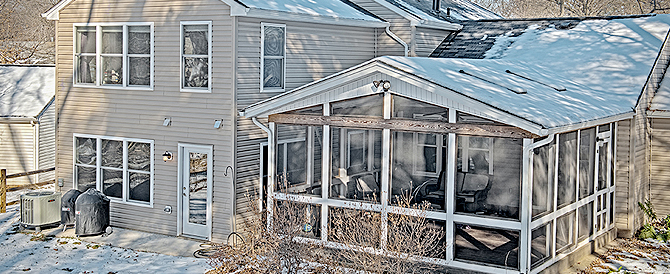A few weeks back, we did a three-part blog series on planning and getting started with a home addition (check them out here:
For today’s blog, we’ll help you to consider the pros and cons of the direction in which you have your home addition constructed. We’ll discuss what’s involved, as well as the advantages and disadvantages of both types of additions, but it’s up to you to figure out what’s best for your wants, needs and budget.
Building Out
The vast majority of home additions involve expanding the footprint of the ground-floor level of the home, primarily because so many additions are first-floor additions – such as expanding the kitchen, adding a family room. For these types of additions, it makes the most sense to build out from the existing structure, but you need to keep in mind that this means a reduction in available yard or driveway space.
What’s Involved: Generally, your contractor will bring in a piece of excavating equipment called a backhoe to dig up the yard in the area where the addition will sit, install a new foundation or slab, then construct the walls and roof of the addition before opening up the existing exterior wall and linking the new and old spaces.
Advantages: Building out typically involves the least disruption to the existing space and to your life, especially if you’re living at home through the project. Because you’re not supporting the new space over the existing structural framing or foundation, you needn’t worry about exposure to the elements when the construction takes place. Also, if you’re creating only a small addition, you may be able to do what’s called a “bump out,” which can avoid any foundation work whatsoever.
Disadvantages: Building out means losing some of your yard, and might even require a zoning variance from the town if you’re within the legal property line “setback,” which is typically 7.5 feet from the neighbor’s property. You could also face limitations from the town’s floor-area-ratio rating, which dictates what proportion of a lot can be built on, including the house, garage and driveway, which could also affect your property tax.
Building Up
There are many ways that additions can happen without expanding the footprint of the house: you can add another story onto a one- or two-story home; you can expand an existing top floor by installing large dormers in a pitched roof to gain useful living space; or you might add living space above an existing garage, porch, sunroom or other one-story wing.
What’s Involved: Although there’s no need to give up a portion of the yard to a new foundation for the addition, your contractor will likely have to expose and then reinforce the existing foundation and wall structure under the new space to ensure that it can support the added weight of the new addition.
Advantages: You won’t lose any yard nor bump into zoning restrictions about setbacks or floor-area-ratio limits.
Disadvantages: Many towns and cities limit the allowable height for houses, which can be an issue when building up. If you’re adding a whole additional story, you’ll also need to account for a stairwell, which can easily eat up around 80 to 120 square feet or more of living space. And your contractor will likely have to tear apart the walls and ceilings in the space below to reinforce or add additional structural support, as well as run the electrical, plumbing and heating lines.
Regardless of which type of addition you choose, the important thing is to discuss your options with your contractor. At MDV Remodeling, our team is very knowledgeable about all aspects of what’s involved in adding on a home addition, including zoning laws and logistics, and can help you decide on what is best for your home. Contact us for a free estimate.

